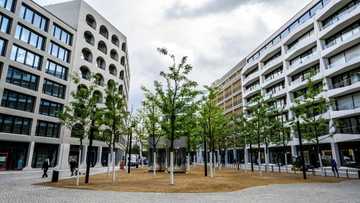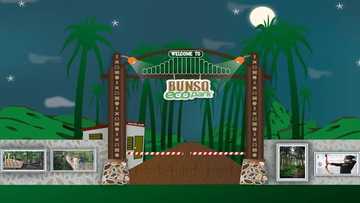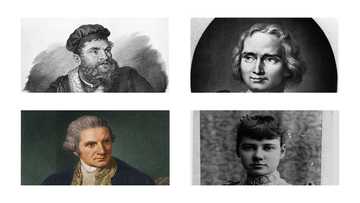Blue City Morocco, Chefchaouen: The history and facts of why the city is blue
Within the rugged Rif Mountains of northern Morocco is a mesmerizing gem that has captivated the hearts of many travellers worldwide. Chefchaouen, also known as the Blue City, is a place where every corner, alleyway, and building is decorated with shades of blue that create an ethereal atmosphere. Explore the fascinating history of Blue City, Morocco, to learn more about the city.

Source: UGC
What city is the Blue City in Morocco? Chefchaouen, also known as Chaouen, is located in northern Morocco and is renowned as the Blue Pearl of Morocco. This city is entirely blue, with blue houses, blue walls, blue roofs, narrow blue streets, and even blue flower pots.
Blue City Morocco history
Moulay Ali Ben Moussa Ben Rached El Alami, founded Chefchaouen in 1471. The original location comprised a small fortress, now known as the Kasbah of Chefchaouen.
The fortress was constructed to protect the region from potential Portuguese invasion–during this period, Portugal was initiating attacks against northern Moroccan cities.
With the construction of a traditional walled area of homes, the medina, and other structures, a town developed outside the fortress. During the Middle Ages, the region was populated by indigenous tribes, Jews and Moors from Spain.
In 1920, the Spanish seized Chefchaouen, making it part of Spain's Moroccan territory. During the Second World War, the region saw a massive influx of Jews fleeing from Europe. In the late 1940s and early 1950s, most Jews left the region to reside in Israel. Chefchaouen was returned to the Moroccans in 1956 when the country obtained independence.
Why is the Blue City painted blue?
There are different reasons as to why the city is painted blue. Some of the major reasons behind it are as follows:
1. To practice Jewish culture and custom
The unique colour scheme dates back to the 15th century when Jewish exiles fled to the city to avoid the Spanish Inquisition. Initially, the painting was intended to reflect the heavens and serve as a reminder of the divine above.

Source: UGC
According to Jewish tradition, blue represents spirituality, protection, and a connection to God. By painting the city this colour, the Jewish residents intended to create a sanctuary that would serve as a reminder of their faith and give them a sense of safety.
2. To ward off mosquitos and heat
Why is Chefchaouen blue? Besides its religious connotations, the colour also served a practical purpose. The region's mild climate and high insect population made living conditions difficult.
It was discovered that the blue pigment derived from a combination of limestone and indigo repels mosquitoes and other insects, making it an effective natural insect repellent. Additionally, by reflecting sunlight, the blue walls kept the interiors of buildings cooler during the hot summer months.
3. To represent the colour of water
What does the blue city in Morocco mean? According to some locals, the walls of Chefchaouen are painted blue to depict the colour of the Mediterranean Sea. Others believe that the colour represents the significance of the Ras el-Maa Waterfall, where residents obtain their drinking water.
Blue City Morocco location
Chefchaouen is a city in northwest Morocco. It is located between Tangier and Tétouan. The name Chefchaouen is of Tamazigh origin, derived from the words echaouen, meaning "the horns," and chef, meaning "look at." Chefchaouen means 'look at the horns', referring to the two mountain peaks that overlook the area.
How do you get to Blue City, Morocco?

Source: UGC
Chefchaouen is accessible from all major Moroccan cities. The most common and shortest route is from Tangier to Chefchaouen, about a two-hour ride over the picturesque Rif Mountains.
You can also travel to Chefchaouen from the major cities of Marrakech, Casablanca, or Fez; the distances are as follows: 6-8 hours from Marrakech to Chefchaouen, 5-6 hours from Casablanca to Chefchaouen, and 3-4 hours from Fez to Chefchaouen.
How do you get to Blue City, Morocco, from Marrakech?
Those starting their adventure in Marrakech can choose among buses, railroads, and private transfers, each offering a unique perspective of Morocco's landscape. As the distance is longer, the journey provides an opportunity to experience the country's diverse beauty and captivating culture. Google Maps also provides an excellent option if you are using a personal vehicle.
What is Chefchaouen, Morocco, known for?
The city is known for its blue buildings and narrow streets. In addition to the natural attractions and activities, such as visiting the Cascades of Akchour and hiking in the mountains, one of the most popular things to do in Chefchaoue is to stroll through the medina. While there, you can admire the picturesque scenes that unfold down each staircase and around each corner.
Less chaotic than other Moroccan cities like Fes and Marrakech, visitors can purchase various traditional Moroccan products. Further, scenes of the city and local life depicted in blue and white on canvases of varying sizes make adorable keepsakes.
Within the old Kasbah, with its beige, brown, ochre, and muted red hues, travellers will find the small Ethnographic Museum, also known as the Kasbah Museum. It contains historical, cultural, and development-related displays and exhibits.
Is the Blue City in Morocco worth it?

Source: UGC
Is the Blue City in Morocco worth the journey? Yes. Chefchaouen embodies the essence of human history, culture, and creativity beyond its aesthetic magnificence.
The blue walls are more than paint; they are a canvas depicting stories of refuge, tradition, and evolution. The trip to Chefchaouen is a pilgrimage to a location that has maintained its authenticity while embracing global recognition.
Where can you get Blue City Morocco photos?
Morocco's Blue City can be experienced through photographs. These pictures merely reflect the beauty, tranquillity, and culture found at Chafchaoeun. The photos are available on free stock image websites like Pexels, Unsplash, and Pixabay.
Blue City, Morocco, is more than a destination; it's a journey through history, culture, and the enduring human spirit. Its blue façade is a beautiful tribute to faith, tradition, and the tenacity of its people. Beyond appearances, the city's allure stems from its capacity to transcend time and tell stories through its walls.
Yen.com.gh recently published an article on Campeche, Mexico. It is also known as Rainbow City, located on the Yucatan Peninsula.
Campeche's many attractions include its well-preserved historic centre, delicious cuisine, colonial architecture and bustling marketplaces. Some of the activities you can carry out in this city include walking along the Malecon, visiting the Francisco de Campeche cathedral, and checking out the Museo de la Ciudad.
Source: YEN.com.gh







